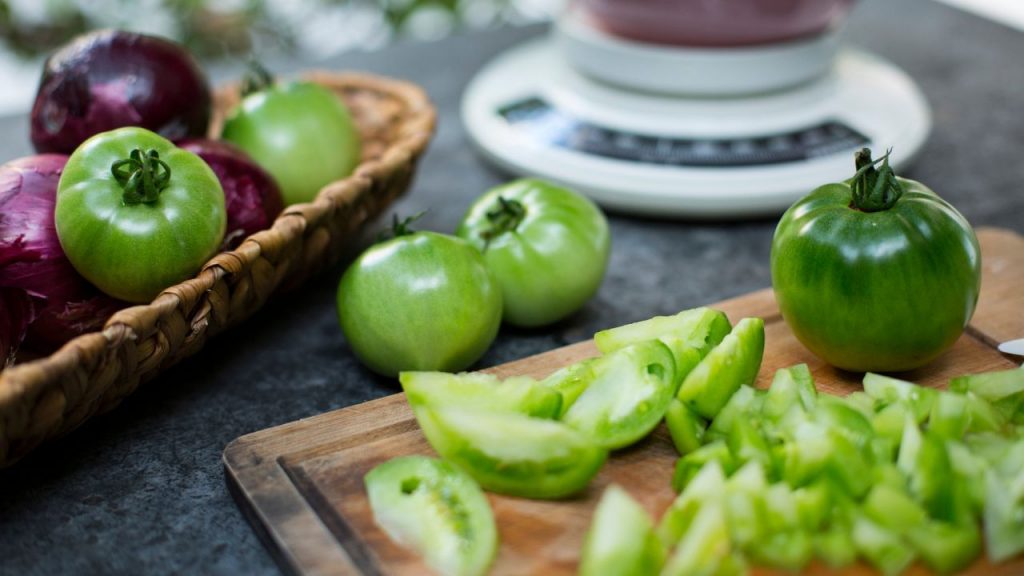The end of summer signals the unfortunate end of the tomato season. While we still have a few weeks in SA to enjoy our plants before the temperatures drop, it’s important to be prepared for the upcoming tomato chores.
Before removing entire tomato plants from the garden, start by ripening the remaining tomatoes to ensure a bountiful harvest. To accelerate ripening, reduce watering to induce slight stress that pushes the plant to produce. Be cautious during periods of heavy rain, as overwatering following dry periods can cause remaining tomatoes to crack.
Remove dead leaves, new flowers, and unusable fruit to redirect the plant’s energy to the remaining fruit, resulting in faster ripening. Alternatively, harvest all tomatoes, including unripe ones, and ripen them off the vine. This also provides greater control over the ripening process. To speed up ripening, store green tomatoes in a paper bag with a ripening apple or banana, or wrap unripe tomatoes individually in newspaper and store them in a dry, dark location.
Tomatoes that are picked before they fully ripen may not always turn red, even if you try to ripen them later. However, green tomatoes are still versatile and useful in cooking. In fact, there are many delicious recipes that call for green tomatoes. For instance, you could whip up a creamy green tomato sauce that’s perfect for burgers or prepare a tasty appetizer of fried green tomatoes.
RECIPE IDEA: The Ultimate green burger
Finally, if you’re growing heirlooms, you may want to harvest your tomato seeds for the next season. To start, ensure that the tomatoes are fully matured before harvesting the seeds. Remove all the seeds and pulp, placing them in a jar. Add water to the jar until the seeds are floating and then cover the jar and keep it in a warm area for a few days.
Once the seeds have settled at the bottom of the jar, remove the mould layer at the top, separate the seeds and rinse them thoroughly, ensuring that all pulp and mould are removed. Once the seeds are clean, let them dry completely. Finally, store the dried seeds in an airtight container, ready for planting in the next season.
Once all your tomatoes have been harvested, it’s time to uproot the tomato plant. Thoroughly clear out any plant remnants from your tomato patch, keeping a lookout for weeds and any concealed fallen leaves and fruits. Also make sure you remove all the roots.
Dispose of the spent tomato plants and debris either by composting or discarding them. Only compost completely healthy plants with no signs of pests or diseases. Clear the patch to make way for your autumn and winter veggies.
ALSO SEE: Heirloom tomatoes: The basics to get you started
Written by Madison Moulton for Garden&Home.
Feature image: Kathrin Ziegler via Getty Images

